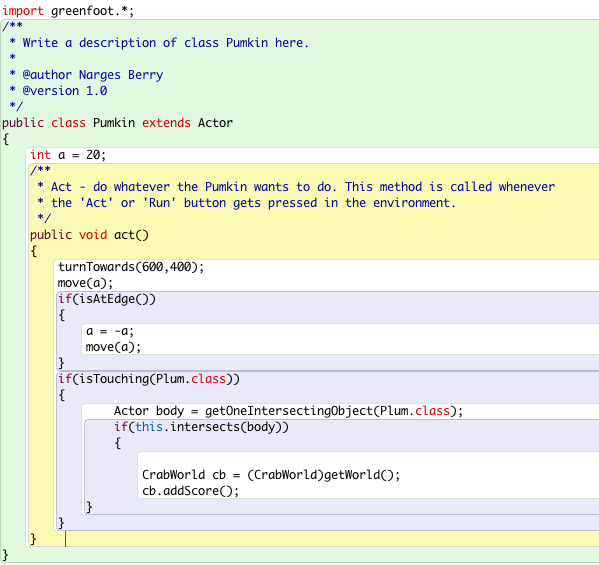



GREENFOOT RANDOM CODE
The Code is going good, but we can still do better. Tell me what % chance each one would be for turning.) Try out several possibilities for turning. This is how you can use it to make the crab turn a little about 10 percent of the time.ģ.3 Try This: Try out the random direct changes shown above in your own version. This call will give us a new random number between 0 and 99 every time it is called, so it will be under 10 in ten percent of the times it comes up. An expression that will be true 10 percent of the time could be: When you want to talk about the chance in percent, dealing with random numbers out a hundred is the easiest way to do it. It uses the < symbol.ģ.1 Try This: On your word document try to figure out an expression using getRandomNumber and < that will when you run it be true exactly ten percent of the time.ģ.2 Try this: Type up another expression that is true 7 percent of the time. Less than works by comparing two numbers and returning true if the first number is smaller (less than) the second. One way to do this is using a random number and a less-than operator. So we need to make an expression that will put in place of something–is–true that will return true in exactly 10 percent of the cases. That’s why you need to put the name of the class the method is in, then a dot, then the name of the method we want to use and it’s parameters (if any).Īlright, let’s say we want a ten percent chance that the crab will turn a bit off course every step. Dot notation means the method is not in the class we are using right now, but is in the class Greenfoot. Greenfoot.getRandomNumber(20) is different from the other methods we called before, it uses the dot notation. Means that you want Greenfoot to pick a random number for you between 0 and 19. With greenfoot the highest number possible is actually one number less than the limit and the lowest number possible is zero. When you tell someone to pick a number between 1 and 10, you are setting the limit to 10 (they will probably pick 7 by the way). The method getRandomNumber has to have a parameter that tells it how high the number can go (the limit of the number). Greenfoot can come up with a random number for us with getRandomNumber. One way to do that with Greenfoot is by using random numbers. The crab should actually go more or less in a straight line, but every now and then it should turn off course a little bit. While it walks, it goes in a straight line. Right now, the crab can walk across the screen and then turn when it hits the edge. This makes Crab a subclass of an Actor subclass called Animal. First, load the scenario Animalcrab from the handout folder.


 0 kommentar(er)
0 kommentar(er)
